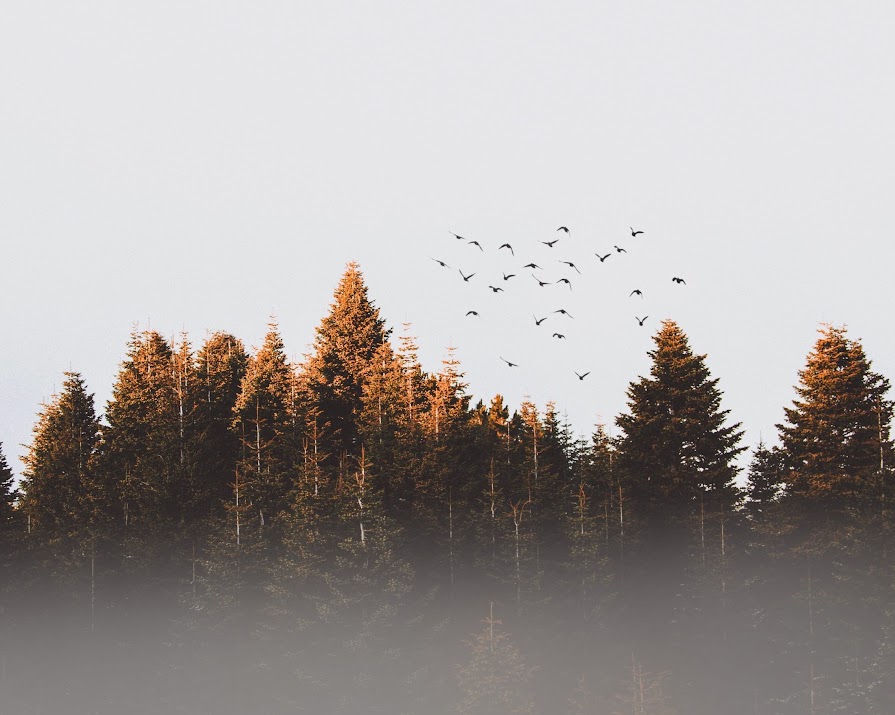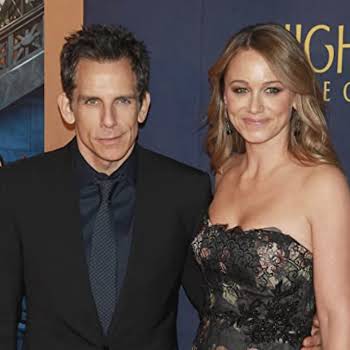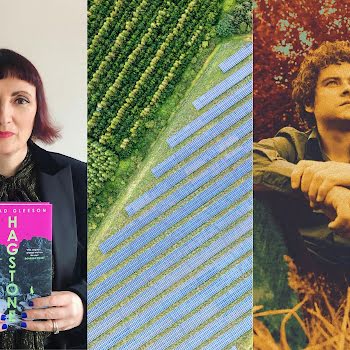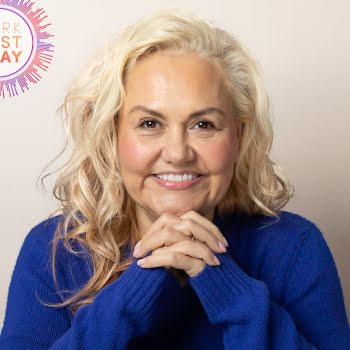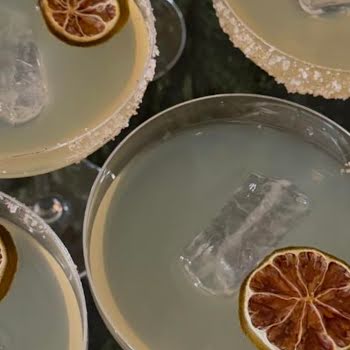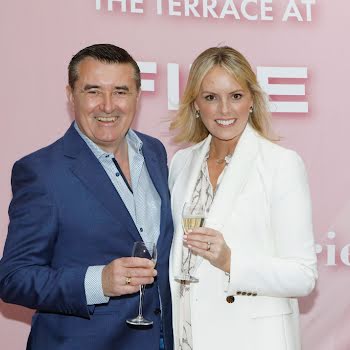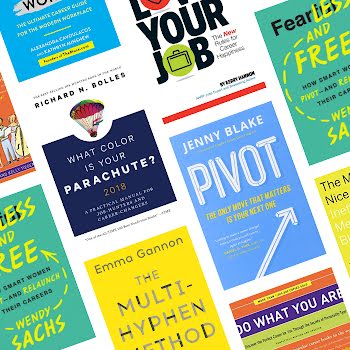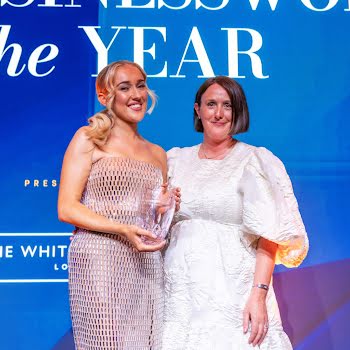
By Lucy White
27th Sep 2020
27th Sep 2020
Some took solace in sourdough, others sea swimming. Me, I fell hook, line and sinker for the wild birds on my balcony
It all started in March, with a tap-tap noise that my boyfriend and I couldn’t place. Living beside the sea, we’d had territorial herring gulls rapping at their own reflections in our windows innumerable times, but this was different, lighter.
After much head-scratching, we eventually identified the culprit: a blue tit, perched on the metal handle of our balcony door, quizzical at its own likeness replayed in the silver patina. He and his missus were scouting for breeding areas – where’s safe, where’s not, beyond the woodland beside our apartment – and their reactions were so lightning-fast, it was difficult to have a good, close-up gawp of the curious pair. But their nimble presence was enough to have me joining a birding group on social media quick-smart.
I was already following British naturalist Chris Packham on Facebook, so when I saw that he and his zoologist stepdaughter, Megan McCubbin, had set up The Self-Isolating Bird Club, a members only birding community that involved them hosting live broadcasts every weekday during lockdown, I was nerdily committed.
There he was, with his bleached-blonde spiky hair, stroking a python or getting excited about kestrels
Packham was a childhood crush of yore, a co-presenter of the BBC’s The Really Wild Show in the 1980s and 1990s. So smitten was I with his beguiling knowledge of wildlife and punk rock – not the most obvious bedfellows, but there he was, with his bleached-blonde spiky hair, stroking a python or getting excited about kestrels – that when he visited my hometown to promote his wildlife photography, I was at the top of the book signing queue. And, yes, I still have his book.
I’d already “turned” vegetarian the year before, rode horses every Saturday, and wore Save the Whales and Anti-Animal Testing badges with idealist pride. However, my modest activism soon became replaced by boys, beer and Blur (which, aren’t mutually exclusive; I hear Damon Albarn is a keen twitcher). Throw in two decades of living in rented apartments, including in Bangkok and Dubai, where no robins bob-bob-bobbed, and suddenly my knowledge of tweets was reduced to Twitter.
Until this bemused little tit appeared during the first days of lockdown, that is, and reminded me of what I inherently was but had long forgotten: once a birdwatcher, always a birdwatcher.

Motley magpies
My reintroduction into amateur ornithology came speedier than a peregrine falcon when I then received *A SIGN* on my birthday. No sooner had I unwrapped a book from an old friend whose parents live on Goldfinch Close and who had the previous year sent me a copy of Donna Tartt’s The Goldfinch, did a pair of ACTUAL GOLDFINCHES appear on the balcony for the first time ever. It was fleeting, but it was real and, in the grip of an existential lockdown crisis, with added PMS, it felt meaningful.
Then a family of three gobby magpies arrived, who, when not Hoovering up the crumbs below, took to vigorous body washes in a makeshift bathtub: my Pyrex casserole dish
Their serendipitous/coincidental appearance (delete as appropriate) sealed my bird-fancying fate and had me downloading ChirpOMeter, a kind of Shazam for identifying birdsong, and falling down a rabbit hole of Googling “Best bird feeders for small birds”. As the great saying goes, “build bird feeders and they will come” – or something – the blue tit was no longer tap-tapping on the door but munching away on a four-perch feeder. Next arrived the great tits then the coal tits then a family of three gobby magpies, who, when not Hoovering up the crumbs below, took to vigorous body washes in a makeshift bathtub: my Pyrex casserole dish.
The avian traffic increased further, with sparrows and robins quick to join the sunflower-hearts party. And then a murmuration of fledging starlings so sudden, so vast and so raucous, I thought my neighbours might complain (they didn’t). This fearless rabble moved on as quickly as they’d first appeared, leaving an unwelcome spatter of poo – and Hitchcockian nightmares – in their wake. Mixed blessings.
I installed a second, cage-style feeder that only the smaller birds can access, all the while elegant white collared doves and flappy wood pigeons grazed on wispy scraps below. As for the goldfinches, happily they weren’t a one off. A charm of 14 regulars would often arrive en masse, squabbling over perches as if they owned the place, their graphic plumage of red, yellow, black and white a sight to behold.
Me, my birds and I
It’s nonsensical to have a favourite bird but, despite my misguided spirit-animal allegiance to the goldfinch, “my” pride and joy has to be the bulbous bullfinch that appeared unexpectedly in early July. Vividly rendered in peach and graphite grey, and cartoonishly stout, these shy creatures are seen in only around 10 per cent of Irish and British gardens so it was a privilege that he visited at all.
So it was extra humbling to have his juvenile offspring also appear, the dad point-blank refusing to feed it via mouth, hoping it would join the bird feeder too, à la bullfinch see, bullfinch do. They enthralled me for about a month and then they vanished – although I can still hear their call from time to time, from the woods.
They do not love me, or even like me, they are only here for the food. But that’s okay, because they’re fulfilling my own altruistic interests: watching them makes me feel better
Being proprietary about wild animals is absurd and yet it’s impossible not to become attached to these palm-sized visitors, each species with its own characteristics. They do not love me, or even like me, they are only here for the food. But that’s okay, because they’re fulfilling my own altruistic interests: watching them makes me feel better.
Last year, Birdwatch Ireland reported that some species groups have declined by 50 per cent since the 1970s, thanks to loss of habit, climate change, government cuts to nature reserves, agricultural pollution and ingesting plastics. These facts do not make me feel better so the least I can do is put some food out for them.

24-hour buffet
But inviting different birds species to a 24-hour buffet has its perils. One evening in August, a goldfinch appeared displaying symptoms of trichomoniasis, a contagious parasitic disease thought to be transferred by the saliva and/or faeces of infected doves and pigeons, and now common in finches. The parasite causes lesions in the bird’s throat so that eventually it can’t feed.
It broke my heart – I cried a river for at least five hours and remained depressed for the rest of the weekend
“My” goldfinch was so swollen, he was practically ball-shaped, and impotently nibbled on seed that he could no longer swallow. It broke my heart – I cried a river for at least five hours and remained depressed for the rest of the weekend, welling up every time the healthy ones appeared on the balcony wondered where their food had gone.
Devastated, I removed the two feeders to contain the outbreak by encouraging the birds to disperse to other food sources, as per BirdWatch Ireland advice. It was a long, hard three weeks, though I could still hear them chirruping in the trees (and took solace in Packham and McCubbin’s live Self-Isolating Bird Club broadcasts). I’d been diligently cleaning the feeders and decking, but vowed to work harder to maintain our codependent relationship in which, perhaps, I needed them more than they needed me.
I’ll never know if the sick goldfinch was my fault; avian trichomoniasis has been around for centuries, and who knows where else these multi-species feed in groups. But I invited them into my life, so it’s my responsibility to be as vigilant as possible, and with covid-strict levels of hygiene. My newly installed giant garden trays below the feeders are much easier to clean than grimy decking and although the magpies, doves and wood pigeons have turned their beaks up at the sudden lack of crumbs, at least the small birds will stand a better chance of staying healthy as we move into autumn and winter.

It sounds daft, but watching these humble wild birds from my makeshift home office, ie dining table, every day has really helped me get through this crummy year. They represent resilience, continuity, coalition and resourcefulness, all of which the decidedly rubbish human race would do well to aspire. They are also hilarious.
If we learned anything from the past six months, it’s that nature doesn’t need us but we need nature. And for me, the epiphany that birds are not for covid but forever.
Read more: IMAGEWrites: Lucy White invites us to swim in the beautiful silence before lockdown ends
Read more: IMAGEWrites: Lucy White is counting down the days to green her doorstep
Read more: How to build a wildlife pond in your back garden (and why you should)











